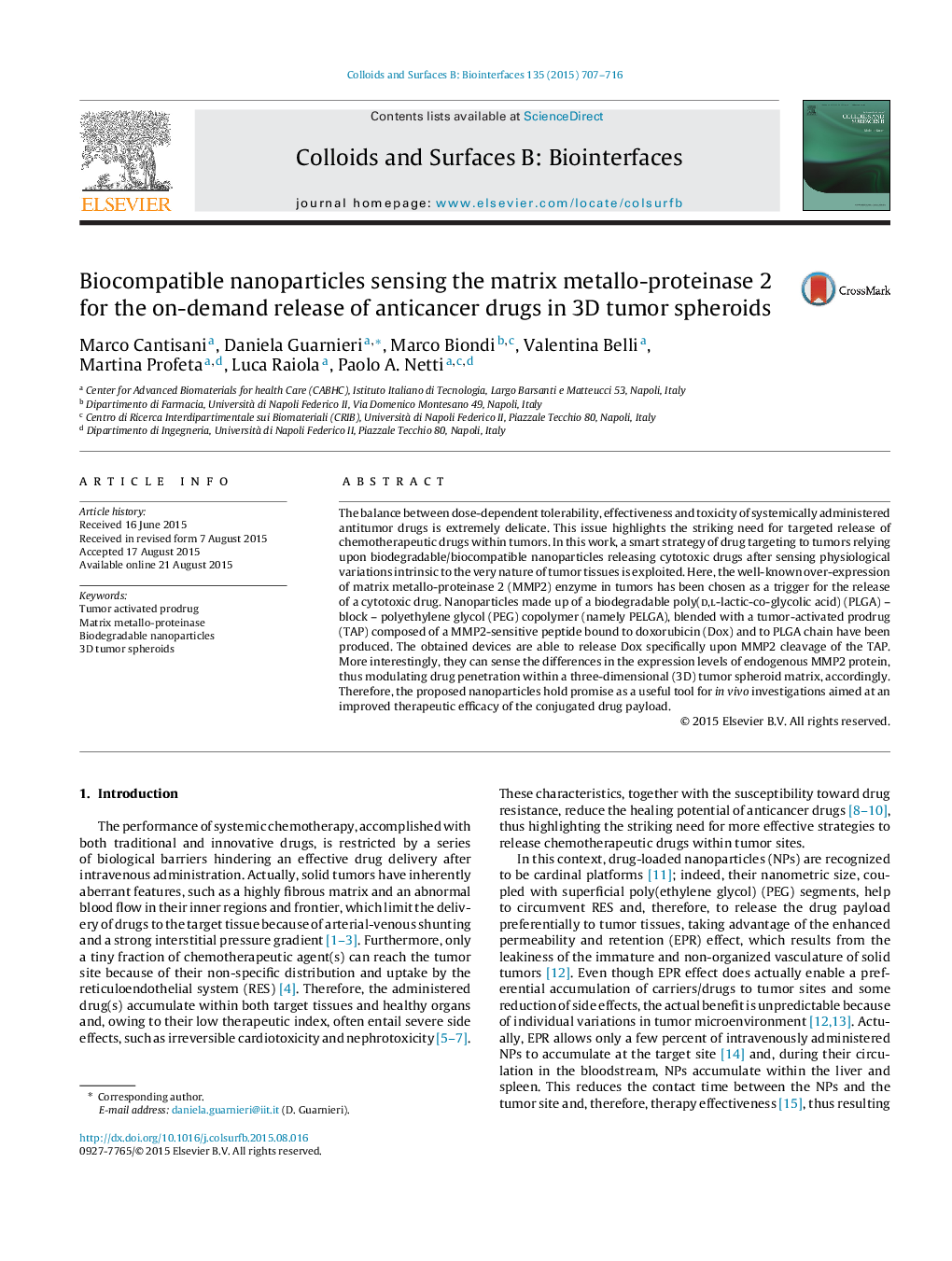| کد مقاله | کد نشریه | سال انتشار | مقاله انگلیسی | نسخه تمام متن |
|---|---|---|---|---|
| 599297 | 1454269 | 2015 | 10 صفحه PDF | دانلود رایگان |
• A new nanocarrier for the on-demand release of anti-cancer drug has been proposed.
• Drug release from the nanocarrier is triggered by tumor micro-environment.
• MMP2 enzyme specifically cleaves the bond between the drug and the nanocarrier.
• The system is able to sense different levels of MMP2 enzyme.
• With this system drugs accumulate more into tumor than healthy tissue.
The balance between dose-dependent tolerability, effectiveness and toxicity of systemically administered antitumor drugs is extremely delicate. This issue highlights the striking need for targeted release of chemotherapeutic drugs within tumors. In this work, a smart strategy of drug targeting to tumors relying upon biodegradable/biocompatible nanoparticles releasing cytotoxic drugs after sensing physiological variations intrinsic to the very nature of tumor tissues is exploited. Here, the well-known over-expression of matrix metallo-proteinase 2 (MMP2) enzyme in tumors has been chosen as a trigger for the release of a cytotoxic drug. Nanoparticles made up of a biodegradable poly(d,l-lactic-co-glycolic acid) (PLGA) – block – polyethylene glycol (PEG) copolymer (namely PELGA), blended with a tumor-activated prodrug (TAP) composed of a MMP2-sensitive peptide bound to doxorubicin (Dox) and to PLGA chain have been produced. The obtained devices are able to release Dox specifically upon MMP2 cleavage of the TAP. More interestingly, they can sense the differences in the expression levels of endogenous MMP2 protein, thus modulating drug penetration within a three-dimensional (3D) tumor spheroid matrix, accordingly. Therefore, the proposed nanoparticles hold promise as a useful tool for in vivo investigations aimed at an improved therapeutic efficacy of the conjugated drug payload.
Figure optionsDownload as PowerPoint slide
Journal: Colloids and Surfaces B: Biointerfaces - Volume 135, 1 November 2015, Pages 707–716
